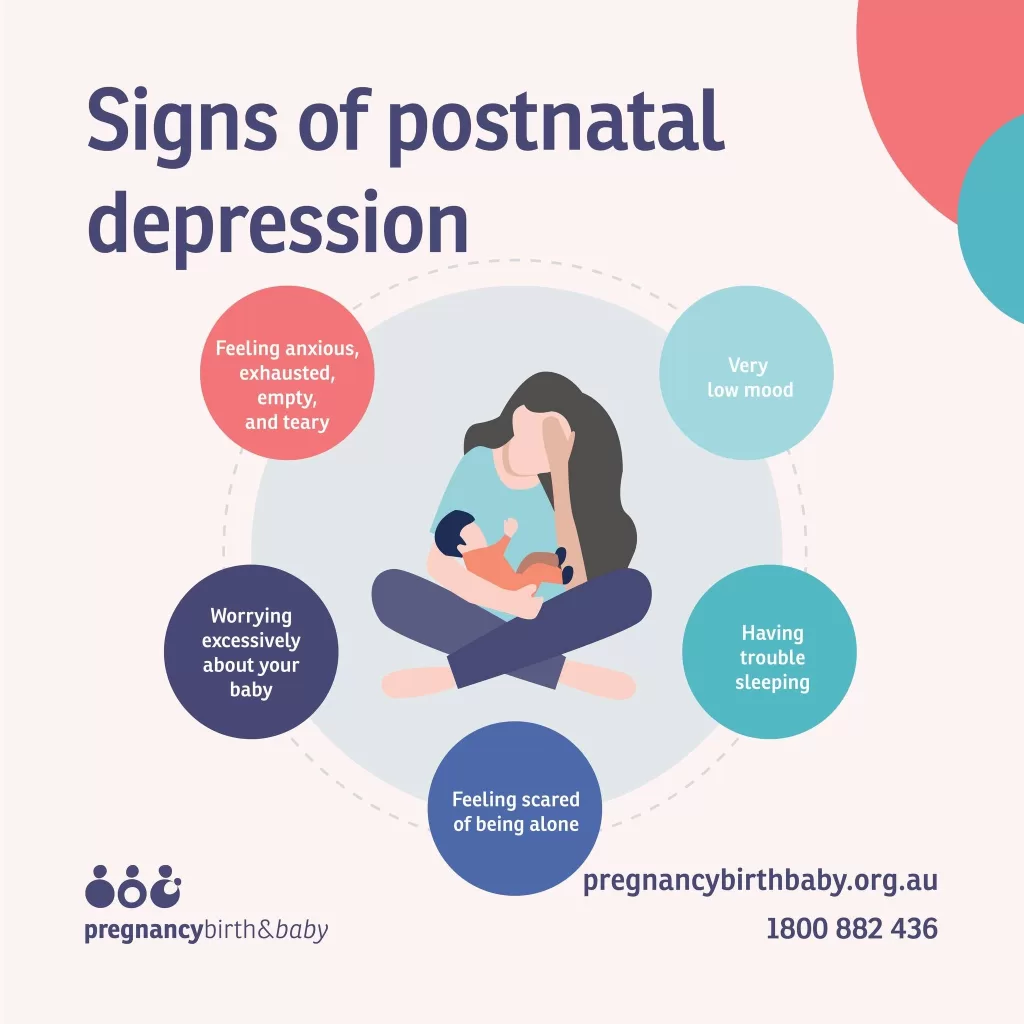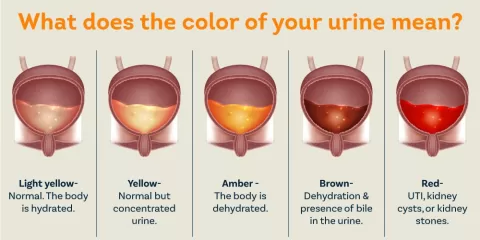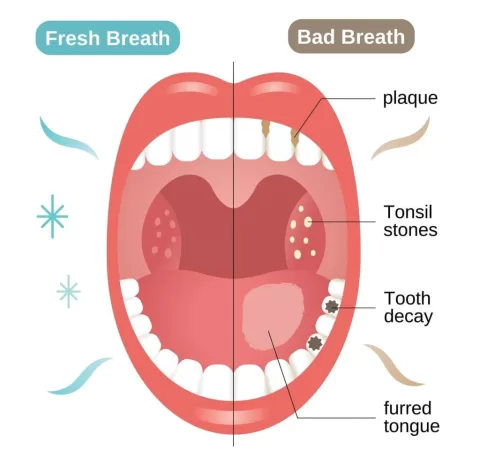Postpartum depression (PPD) is a significant mental health issue that affects approximately 10-15% of new mothers, leading to distressing emotional challenges after childbirth. Research from Weill Cornell Medicine and the University of Virginia suggests a revolutionary approach to tackling this condition through a predictive blood test that analyzes neuroactive steroids linked to hormonal imbalances in pregnant women. These steroid levels can indicate a woman’s risk of developing PPD symptoms, such as sadness, fatigue, and difficulty bonding with their newborn. This proactive identification may enable preventive treatments, ultimately improving the lives of mothers and their children. By understanding the biological underpinnings of postpartum depression, healthcare providers can offer more effective support and intervention during these crucial early months.
Often referred to as maternal depression or perinatal depression, postpartum depression is a pervasive mental health condition that can challenge the well-being of new mothers. The onset of this disorder is typically characterized by various emotional and physical symptoms that arise following childbirth, influencing both the mother’s quality of life and her bond with her baby. Recent studies emphasize the importance of understanding the biomarkers associated with this condition, particularly in recognizing hormonal imbalances that contribute to its development. By identifying at-risk individuals through innovative diagnostic methods, such as analyzing neuroactive steroids in blood tests, clinicians can better strategize preventive treatments. As awareness grows around postpartum mental health, the identification and management of postpartum depression is becoming increasingly crucial for healthcare providers.
Understanding Postpartum Depression (PPD)
Postpartum Depression (PPD) is a mental health condition that occurs in approximately 10-15% of new mothers, significantly affecting their emotional wellbeing after childbirth. This serious disorder is not just ‘the baby blues’ but a multifaceted challenge that can disrupt a mother’s ability to bond with her newborn. Common PPD symptoms include persistent feelings of sadness, anxiety, and fatigue, which can last for months or even years if left untreated. Understanding the complexities of PPD is crucial as it impacts not only the mother but also the child’s development and the family dynamics as a whole.
Research has shown that the hormonal changes that occur during pregnancy and postpartum are critically linked to the onset of PPD. Specifically, fluctuations in neuroactive steroids, which are compounds derived from hormones such as progesterone, may influence a mother’s emotional regulation and susceptibility to depression. Identifying these hormonal imbalances through predictive blood tests could lead to better early interventions, helping mothers receive timely support before symptoms escalate.
Neuroactive Steroids as Potential Predictors for PPD
The recent study from Weill Cornell Medicine and the University of Virginia has highlighted the role of neuroactive steroids in predicting the risk of developing Postpartum Depression (PPD). Specifically, researchers found that certain levels of neuroactive steroids, particularly those derived from progesterone, were indicative of PPD risk in pregnant women. By analyzing blood samples collected during key stages of pregnancy, scientists can now correlate the presence of specific neuroactive steroids with the potential for future mental health issues. Such a predictive model could transform the way healthcare providers approach maternal mental health.
The most significant findings suggest that women who were later diagnosed with PPD exhibited a lowered ratio of pregnanolone to progesterone. This hormonal imbalance hints at a critical window for intervention. By identifying these biomarkers in the third trimester, healthcare professionals may soon have the ability to offer preventive treatments that address these specific hormonal fluctuations, potentially preventing the onset of PPD.
The Link Between Hormonal Imbalance and PPD Symptoms
Hormonal imbalance plays a pivotal role in the development of Postpartum Depression (PPD). During pregnancy, the body experiences dramatic shifts in hormone levels, particularly progesterone, which is believed to have a direct effect on mood regulation. After childbirth, if the hormonal levels do not return to their baseline effectively, women may experience emotional difficulties leading to PPD. This connection underscores the importance of monitoring hormonal levels during and post-pregnancy.
A deficiency in the conversion of progesterone to its beneficial metabolites can exacerbate PPD symptoms. The study indicates that higher levels of isoallopregnanolone, a metabolite linked to stress, may contribute to the risk of postpartum depression. Understanding this relationship is crucial, as it highlights the need for potential therapeutic strategies aimed at restoring hormonal balance postpartum. This could include lifestyle modifications, dietary adjustments, or even new pharmacological treatments.
Preventive Treatments for Postpartum Depression
With the identification of neuroactive steroid levels as predictors for PPD, there is a promising avenue toward preventive treatments. Currently, medications like brexanolone and zuranolone are approved for treating diagnosed PPD, but they may also hold the potential for preventive action if administered to women identified as at risk based on blood test screenings. By preemptively addressing hormonal imbalances before the emergence of PPD symptoms, healthcare providers could significantly improve outcomes for new mothers.
This proactive approach to managing postpartum mental health highlights the importance of early detection. Researchers emphasize the value of larger, diverse studies to validate their findings and potentially broaden the scope of preventive treatments. If successful, these measures could revolutionize maternal healthcare, reducing the incidence of PPD and promoting healthier parent-child relationships from the outset.
Importance of Early Detection in PPD
Early detection of Postpartum Depression (PPD) can significantly improve treatment outcomes for affected mothers and their families. By employing predictive blood tests to identify women at higher risk based on neuroactive steroid levels, healthcare providers can implement timely interventions that prevent the progression of PPD symptoms. Early intervention may include counseling, support groups, and medication, tailored for those who are predisposed to experiencing PPD.
Detecting PPD before symptoms become pronounced can also help to alleviate the stigma surrounding maternal mental health. Open discussions about the biological factors contributing to PPD pave the way for a more supportive environment for mothers. Recognizing PPD as a treatable condition rather than a character flaw can encourage more women to seek help and support during this vulnerable period.
The Role of Hormonal Changes During Pregnancy
Pregnancy brings about a remarkable array of hormonal changes that serve crucial roles in the body’s adaptation to nurture a new life. Among these, progesterone is pivotal in preparing the body for childbirth and plays a significant role in mood regulation. However, the transition to motherhood can also disturb normal hormonal patterns, leading to an imbalance that may contribute to the onset of Postpartum Depression (PPD). Understanding these changes is vital in developing strategies to mitigate PPD risks.
Moreover, the intricate tie between hormonal changes and mental health underscores the necessity for tailored approaches to postpartum care. Addressing hormonal imbalances through lifestyle changes, therapy, and potentially medication can help in managing mood disorders that accompany the postpartum period. This multifaceted understanding is essential for healthcare providers, as it equips them to offer comprehensive support to new mothers.
Potential Impact of Research on PPD Understanding
The recent findings on neuroactive steroids and their connection to Postpartum Depression (PPD) represent a significant breakthrough in understanding maternal mental health. By establishing a clear biological basis for PPD, researchers are paving the way for innovative approaches to treatment that are rooted in scientific evidence. This not only enhances the current comprehension of PPD but may also inform future research in related anxiety and mood disorders.
By collaborating across various disciplines, including psychiatry, obstetrics, and neurobiology, researchers are working to create a holistic understanding of how hormonal changes affect mental health during and after pregnancy. This knowledge is crucial for developing comprehensive care strategies, empowering healthcare professionals to provide better support systems for mothers at risk of PPD.
Challenges in Diagnosing Postpartum Depression
Diagnosing Postpartum Depression (PPD) presents several challenges, mainly because many symptoms overlap with typical adjustments to motherhood. New mothers may experience changes in mood, sleep patterns, and appetite, which can easily be dismissed as routine postpartum recovery. The stigma surrounding mental health may also prevent some women from seeking help or disclosing their struggles, making it even more difficult to achieve accurate diagnoses.
Research efforts, such as those focused on neuroactive steroid levels, offer promising strategies for overcoming these diagnostic challenges. By providing a biological marker that indicates potential risk for developing PPD, healthcare providers can shift towards a more diagnostic process based on objective measurements rather than subjective reporting alone. This could lead to more accurate and timely treatments, ultimately improving outcomes for mothers and their children.
Future Directions in PPD Research
The future of postpartum depression research looks optimistic, particularly with advancements in understanding the biological mechanisms behind PPD. The findings surrounding neuroactive steroids as potential predictors provide a compelling direction for subsequent studies aimed at refining diagnostic methods and treatment interventions. Emphasizing a preventative approach could lead to breakthroughs in reducing the prevalence of PPD and enhancing maternal mental health.
Additionally, ongoing research into the enzymatic processes that regulate the conversion of progesterone into other metabolites is crucial. By illuminating the pathways that lead to hormonal imbalances, scientists can develop targeted therapies aimed at normalizing these processes. This innovative perspective on PPD not only facilitates deeper understanding but also inspires hope for effective prevention and treatment strategies for all women experiencing the challenges of postpartum life.
Frequently Asked Questions
What are the predictive blood tests for Postpartum Depression (PPD)?
Predictive blood tests for Postpartum Depression (PPD) are emerging based on research showing that specific neuroactive steroid levels in a woman’s blood during pregnancy can indicate her risk for developing PPD after childbirth. These tests may measure levels of neuroactive steroids derived from progesterone, which have a biological influence on emotional regulation and stress response.
How do neuroactive steroids relate to Postpartum Depression symptoms?
Neuroactive steroids, such as pregnanolone and isoallopregnanolone, play a crucial role in modulating the brain’s response to stress. Research indicates that women with imbalanced levels of these steroids during pregnancy are at a heightened risk of experiencing Postpartum Depression (PPD) symptoms, like sadness, fatigue, and difficulty bonding with their newborns.
What hormonal imbalances are linked to Postpartum Depression?
Postpartum Depression (PPD) has been linked to hormonal imbalances, particularly concerning progesterone metabolism. Studies have found that women who develop PPD often show lower ratios of helpful neuroactive steroids, like pregnanolone, and elevated levels of isoallopregnanolone, which may contribute to an increased likelihood of developing depressive symptoms postpartum.
What are the early signs of Postpartum Depression (PPD) that pregnant women should watch for?
Early signs of Postpartum Depression (PPD) may include symptoms like persistent sadness or hopelessness, difficulty bonding with the baby, extreme fatigue, changes in appetite, and trouble sleeping. Pregnant women at risk can be identified through predictive blood tests measuring neuroactive steroid levels, allowing for timely intervention.
Are there preventive treatments for women at risk of Postpartum Depression?
Currently, there are treatments available for those diagnosed with Postpartum Depression, such as brexanolone and zuranolone. However, ongoing research suggests that identifying neuroactive steroid imbalances through predictive blood tests may allow for preventive treatments to be developed, potentially reducing the occurrence of PPD in at-risk pregnant women.
How can a blood test predict the risk of Postpartum Depression?
A blood test can predict the risk of Postpartum Depression (PPD) by analyzing levels of neuroactive steroids, which are influenced by hormonal changes during pregnancy. By measuring these levels during the third trimester, healthcare providers may identify women who are at a higher risk for developing PPD symptoms, enabling early intervention.
What is the significance of neuroactive steroid levels in understanding Postpartum Depression?
Neuroactive steroid levels are significant in understanding Postpartum Depression (PPD) as they reflect the hormonal changes that occur during pregnancy. Research indicates that imbalances in these steroid levels can predict the onset of PPD, providing valuable insights into the biological mechanisms that contribute to this condition.
What role do hormonal imbalances play in the onset of Postpartum Depression?
Hormonal imbalances, particularly involving progesterone and its metabolites, have been implicated in the onset of Postpartum Depression (PPD). Abnormal levels of neuroactive steroids, which affect mood regulation and stress responses, can increase the risk of developing PPD symptoms in new mothers.
Can postpartum depression symptoms develop after several weeks postpartum?
Yes, postpartum depression symptoms can develop several weeks after delivery, typically peaking around 4 to 6 weeks postpartum. This period is critical, as understanding these timelines can help healthcare providers offer appropriate interventions and support for mothers experiencing PPD.
What impact does early intervention have on Postpartum Depression?
Early intervention for Postpartum Depression (PPD) can significantly improve outcomes for both mothers and their infants. By identifying women at risk through predictive blood tests and addressing symptoms early, healthcare providers can implement treatment strategies that enhance emotional well-being and support maternal-infant bonding.
| Key Point | Details |
|---|---|
| Prevalence of Postpartum Depression | Affects 10-15% of new mothers after childbirth, impacting both parent and child. |
| Potential Predictive Blood Test | Study identifies neuroactive steroid levels in blood during late pregnancy that may predict risk of PPD. |
| Symptoms of PPD | Symptoms include difficulty bonding, feelings of sadness, fatigue, loss of appetite, and trouble sleeping. |
| Biological Mechanisms | Research focuses on progesterone’s role and its metabolic byproducts (pregnanolone & isoallopregnanolone) influencing stress and mood. |
| Research Findings | Women developing PPD showed a specific neuroactive steroid ratio in the third trimester, indicating a metabolic imbalance. |
| Future Directions | Study aims to validate findings and explore preventive treatments based on neuroactive steroid levels. |
Summary
Postpartum Depression (PPD) is a significant concern for new mothers, impacting their emotional well-being and their ability to bond with their newborns. New research suggests that identifying specific neuroactive steroid levels in blood tests during pregnancy could predict the risk of developing PPD. With an awareness of the biological triggers tied to PPD, early intervention strategies may be developed to help affected mothers, addressing a pressing need for both preventive measures and effective treatments. Understanding these predictors not only aids in managing postpartum depression but may also advance the treatment strategies for broader psychiatric disorders.
The content provided on this blog (e.g., symptom descriptions, health tips, or general advice) is for informational purposes only and is not a substitute for professional medical advice, diagnosis, or treatment. Always seek the guidance of your physician or other qualified healthcare provider with any questions you may have regarding a medical condition. Never disregard professional medical advice or delay seeking it because of something you have read on this website. If you believe you may have a medical emergency, call your doctor or emergency services immediately. Reliance on any information provided by this blog is solely at your own risk.








